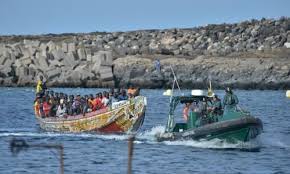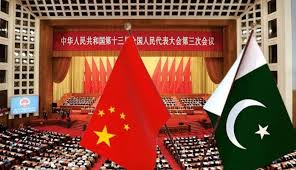The EU’s new migration pact is intended to neutralise the far right – it risks empowering it

Brussels: The Oscar-nominated Io Capitano, now showing in cinemas, is a sensitive and moving portrait of the trials faced by two teenage boys as they attempt to reach Europe, via unofficial migration routes, from their homes in Senegal.
The film is unsparing in its depiction of the violence and danger they face along the way – but what it doesn’t show is how the boys’ journey is shaped by European border policy from almost the moment they set off.
Their first stop, the people-smuggling hub of Agadez, Niger, is the fifth largest city in a country into which the EU has poured millions of euros in recent years to combat smuggling. It hasn’t halted the trade entirely, but it has forced it further underground. In Libya, where the boys are tortured and trafficked by armed gangs, European governments have striven to keep migrants in place – as painstakingly documented by Sally Hayden in her recent book My Fourth Time, We Drowned – despite the dire threat to their safety.
When the boys eventually make it on to a rusty boat and set off across the Mediterranean for Italy, they enter a space where the EU has curtailed search and rescue operations, and where volunteer rescuers have faced persistent harassment from European authorities. And as migrants’ rights activists in Italy have pointed out, should the passengers reach Italian shores alive, then Seydou – the protagonist of the story, who ends up piloting the boat – may well find himself labelled a smuggler and threatened with prison.

Seen in this light, the EU’s long-awaited pact on asylum and migration, which passed a knife-edge series of votes in the European parliament last week, continues an established trend towards deterrence. Ahead of European elections in June, in which rightwing populist parties are predicted to make significant gains, the pact’s centrist supporters have hailed the legislative package as a victory for the traditional EU values of compromise and moderation. Yet with a heavy focus on security screening and the removal of migrants deemed undeserving, the pact highlights how far Europe’s centre has already shifted to the right on migration – and risks further empowering the radical right it aims to neutralise.
The pact is an attempt to fix some of the problems that have bedevilled European politics since the refugee crisis of 2015. The new laws allow for enhanced screening and surveillance of irregular migrants at EU borders, with a “fast track” process for asylum applications and greater powers to return people ineligible for asylum to their countries of origin. At the same time, “solidarity” measures aim to set basic accommodation standards across the EU and relieve the pressure on states at the bloc’s physical frontiers. During sudden spikes in the number of people arriving – for instance, if there’s a refugee crisis in a neighbouring region – asylum seekers can be relocated elsewhere in the EU. If hostile states use migration to foment chaos on the EU’s borders, as Belarus and Turkey have both done in recent years, then EU member states will be allowed to take emergency measures to detain migrants or turn them away.
In the words of the European Commission vice-president Margaritis Schinas, it will create “not a fortress Europe, but a well-guarded house, with more secure external borders and clear rules on who is entitled to enter”. Human rights NGOs, on the other hand, warn that in combination, these measures will lead to the increased use of detention at EU borders – for example in the kind of “closed” reception centres that Greece already operates – and an increased risk that people will be sent back to countries where their lives are in danger.
The logic of these measures is that tougher controls will reduce the sense of chaos at the EU’s borders and allow Europe to more efficiently give asylum to those in genuine need. But the plan is undermined by a series of misconceptions. The first is that tougher measures, focused on removing those deemed ineligible for asylum, will lead to the appearance of greater control. The majority of people who take smuggler routes to Europe do so, as official statistics show, because they are fleeing violence and persecution. They do so for a lack of safe, legal options. A record 114 million people are displaced by conflict worldwide today, according to UNHCR, the UN refugee agency.
Second, the EU’s problem was never really a lack of common standards on asylum – but a lack of will to enforce them. Think, for instance, of the revelation last year that the Greek coastguard was abandoning refugees at sea. Greece has faced no real sanctions for this violation. If human rights standards are not respected, then a measure that looks good on paper – a fast-track asylum procedure, for example – can become a recipe for unfair treatment. The UK’s experiment with “fast track” immigration detention, ruled unlawful in 2015, is a cautionary tale here.
Third, the political compromise that the pact represents – it was supported by most centre-right, centre-left and liberal MEPs, though not the Greens or the left, who opposed it on human rights grounds – risks reinforcing the radical right’s framing of migration. Radical right MEPs were perfectly happy to vote for the package’s deterrent measures, while stridently opposing the more humanitarian elements like the proposed EU-wide “relocation” scheme, which they see as an unacceptable constraint on national sovereignty. (France’s Rassemblement National, for instance, said the pact “imposes the distribution of migrants” on EU member states and called for a “defeat” of the project in June’s elections.)
It’s dangerous to try to split the difference on this. The radical right don’t oppose migration because it’s not efficiently managed; they oppose it because they see it as a threat to European identity. Support for these parties is rooted in a widespread sense among some voters that conventional politics has failed, not a mere kneejerk reaction to recent immigration. Without a more comprehensive challenge to their worldview, then the pressure to shift the dial even more towards migration deterrence is only likely to grow.
Even in these circumstances, there is what some human rights NGOs call a “glimmer of hope”. The pact will take several years to implement – the commission doesn’t expect to get going until 2026 at the earliest, and it must still be approved by national governments. It contains some progressive measures, such as a proposal to expand safe, legal routes to asylum with the support of the UNHCR. It’s not too late to argue for measures like these to be expanded, and for the pact’s more authoritarian elements to be reined in. But to do that, Europe needs politicians who are up for the fight.





